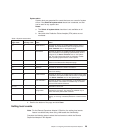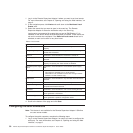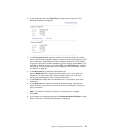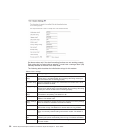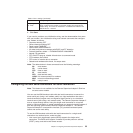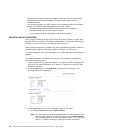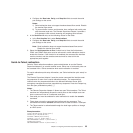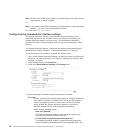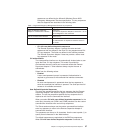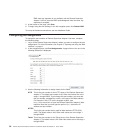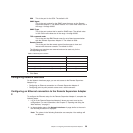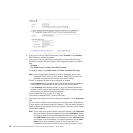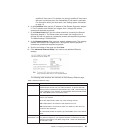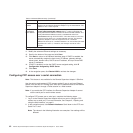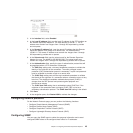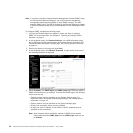
sequences are defined by the Microsoft Windows Server 2003
Emergency Management Services specification. The key sequences
that are supported are described in the following table.
Table 7. Supported Emergency Management Services key sequences
Task Key sequence
Enter the Remote Supervisor
Adapter II command-line interface
Press Esc (
The Remote Supervisor Adapter II sends Esc * as an
acknowledgment to the command.
Exit the command-line interface Press Esc Q
Reset the server Press Esc R Esc r Esc R
No authentication is required to reset the server in
this mode.
v CLI with user defined keystroke sequences
The Remote Supervisor Adapter II accepts the enter and exit
sequences that are defined in the Enter CLI key sequence and Exit
CLI key sequence. The fields are defined in the following sections.
The Remote Supervisor Adapter II does not provide a server reset
key sequence in this mode.
CLI
authentication
The command-line interface can be automatically invoked when a user
types the Enter CLI key sequence. This mode is provided for
environments where the serial port is secured outside the Remote
Supervisor Adapter II. Telnet sessions always require the user to
authenticate.
Select from the following values:
v Enabled
A user name/password prompt is presented. Authentication is
required to get access to the command-line interface commands.
v Disabled
No user name/password is presented when the key sequence to
enter the command-line interface is pressed. The serial port has full
access to all available commands.
User
Defined Keystroke Sequences
The enter key sequence specifies the key sequence that the Remote
Supervisor Adapter II will require to begin a command-line interface
session. The exit key sequence specifies the key sequence that is
required to exit from the command-line interface.
When you select CLI with user defined keystroke sequences for the
serial port, the serial port (COM1 and COM2) sessions use the custom
command-line interface enter and exit key sequences.
The Telnet sessions always use the custom command-line interface
enter key sequence to return to the Remote Supervisor Adapter II
command-line interface.
The sequences can be up to 19 characters. Use the caret symbol (^) to
specify control characters in the Web interface.
The default sequences are equivalent to the EMS key sequences.
When CLI with user defined keystroke sequence is selected, the
Chapter 3. Configuring the Remote Supervisor Adapter II 37



